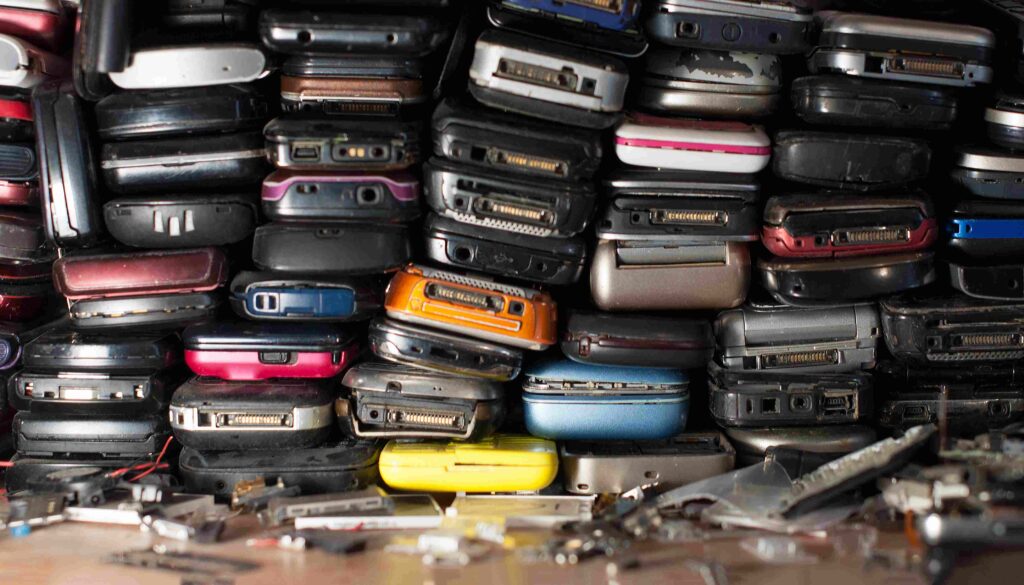How often do you change your mobile phone? How often do you change your computer? How often do you change your television set? Certainly this time has shortened in recent years due, in large part, to planned obsolescence. A phenomenon that refers not only to the fact that a technological object stops working, but also to the fact that a better one comes along or, directly, goes out of fashion. The consequence is that technological waste is constantly increasing and threatening the environment.
In recent decades, we have taken it for granted that the life of products is relatively short, as they deteriorate or become obsolete with the passage of time. In many cases, when a product breaks down, the manufacturer directly tells us that it is unprofitable to repair it and asks us to buy a new one. However, the fact that these products stop working is part of their design and, in many cases, has been carefully planned by the manufacturers to force us to buy new products.

The dark side of this spiral of continuous product renewal is that it generates immense amounts of waste, especially technological waste. In the case of the European Union, this is estimated to be over 2.5 billion tonnes per year. The alternative to this problem is the circular economy, which involves reusing, repairing and recycling existing materials and products wherever possible to extend their life cycle.
WHAT IS PLANNED OBSOLESCENCE?
Planned obsolescence refers to products designed to fail prematurely or become obsolete in the short to medium term. Typically, the purpose is to sell a new or upgraded product, a practice already banned in some countries. Its origin is attributed to the US automobile industry, when in 1924 a General Motors executive, Alfred P. Sloan Jr, suggested launching new models every year to maintain sales.

Which products are affected by planned obsolescence?
The model of planned obsolescence has been applied to a multitude of consumer products for decades. Cars, already mentioned, are a clear example, but also electronics, from computers, televisions and mobile phones to household appliances (washing machines, dishwashers, microwave ovens, etc.) or software. Even fashion, whose textile industry is one of the most polluting, is part of this wheel, as are toys and even furniture.
Planned obsolescence has advantages for manufacturing companies and for the economic system itself, as it allows sales to be maintained or even increased year after year, stimulating consumption. In turn, society also benefits from constant investment in R+D+i. But it undoubtedly has its disadvantages, as it generates tonnes of waste and over-exploitation of resources affecting the environment, as well as causing permanent dissatisfaction among buyers, who go into debt or develop stress in order to obtain the latest models.
TYPES OF PLANNED OBSOLESCENCE
The main types of planned obsolescence are analysed below:
- Systemic
Occurs, for example, when a computer is no longer compatible with the new version of the operating system or new peripherals can no longer be connected because the port standard has changed. - Perceived
Occurs, for example, when smartphone or clothing designers change the style of products so that old ones are perceived as less desirable. - Date
Some products simply stop working or are decommissioned after a certain date, forcing them to be replaced even if they are in good used condition. - Legal
Occurs when legislation prohibits the use of a product, e.g. the use of diesel vehicles in the centre of many European cities to reduce emissions.
EXAMPLES OF PLANNED OBSOLESCENCE
Specifically, these are some practices of planned obsolescence:
- Repair prevention: many consumer electronics products are designed in such a way that the user can neither repair them nor replace parts. This sometimes results in a physical impossibility, as the casing cannot be opened without breaking or parts are welded to prevent replacement.
- Artificial durability: this is the design of a product that deteriorates rapidly, for example by using less resistant materials in the parts most subject to wear. In the case of computers, there comes a time when software updates are no longer compatible.
- Irreplaceable batteries: some laptops, mobile phones or electric toothbrushes have lithium-ion batteries with a useful life of two or three years, which cannot be replaced by the end user and which force him to buy a new device.
PLANNED OBSOLESCENCE AND THE ENVIRONMENT
The most immediate consequence of the constant renewal of products that work perfectly but have gone out of fashion or broken before their time is the increase in technological waste. The accumulation of this waste, whose recycling rate is still insufficient, causes a deterioration of the environment, which in turn has an impact on climate change.
In addition, production cycles are becoming shorter and shorter and consume more and more raw materials, some of which are scarce and strategic, such as coltan, which makes it possible to reduce the size of batteries. The product distribution process also consumes large amounts of energy, as well as increasing air pollution.
Combating planned obsolescence
On an individual level, we can reduce the impact of planned obsolescence on the environment by avoiding unnecessary or fashion-driven purchases and opting for recycled and recyclable products, or refurbished in the case of consumer electronics. Collectively, in 2015 the EU announced the introduction of product life labelling, which France has already passed into law. The European platform Right to Repair, opens a new window. advocates the development of products that last longer and the right of users to repair and replace components. Germany recently introduced a new law requiring mobile phones to last at least seven years.



